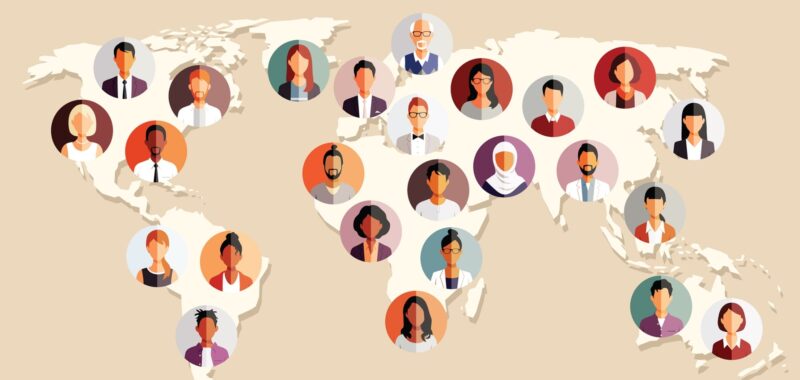Opinions expressed by Entrepreneur contributors are their own.
As entrepreneurs continue to look for ways to expand their global footprint, they often encounter a significant hurdle: the language barrier and the risk it presents. Miscommunication and misunderstandings can lead to costly mistakes, drains on company time and missed opportunities.
As CEO of INS Global, I have seen firsthand thousands of success stories for businesses that have successfully made the leap into multilingual markets. Though it may seem counterproductive at first, bridging the language gap and expanding into a new market can be one of the most profitable ways to grow a business today. Strategically equipping your company to overcome language barriers will set you up for long-term success in future markets.
Related: Going Global? 3 Strategies to Ensure Nothing’s ‘Lost in Translation’
Identify language and cultural challenges
Current employees’ lack of language proficiency in the target market’s language is the most obvious barrier for businesses expanding into a new market. Therefore, the most obvious solution to identifying language barriers is to simply “hire bilingual employees,” but this short-sighted and reductive reasoning may not actually be the best long-term solution. Bilingual employees will certainly assuage the ability to communicate with customers, suppliers and employees. However, cultural nuances can complicate matters, as what is considered polite or respectful in one culture may be offensive in another.
The potential risks of miscommunication are significant and can result in lost sales, damaged reputations or even legal issues. For example, marketing campaigns that hit the easy button by making literal translations risk failing to fully capture idioms in other nationals that could offend a target audience. In the 1980s, when KFC first launched in Beijing, it made a translation mistake to its logo. While “finger-lickin’ good” chicken sounds appetizing, its literal translation was made to read “eat your fingers off.” Learn from similarly embarrassing literal translation mistakes made by international companies including McDonald’s, Clairol, Sony and Rolls Royce, and be sure to take into account both language and cultural nuances in your workflows.
Effective communication strategies
To overcome such language barriers, businesses that prioritize effective communication as a business strategy are likely to find better success in their new target market. Here are some practical strategies:
-
Translation services: Hiring professionally certified translators ensures that messages are accurately conveyed. While machine translation tools have improved, human translators can better handle nuances and cultural context and ultimately save you time and money by getting it right the first time.
-
Language training: Investing in language training for employees who interact with customers, suppliers or partners can significantly improve communication. This can be done through online courses, language exchange programs or in-person classes.
-
Multilingual customer support: Providing customer support in multiple languages demonstrates a commitment to serving customers worldwide. This can be achieved through hiring multilingual staff or partnering with a customer support provider that offers multilingual services.
-
AI-driven translation software has become increasingly sophisticated, offering more accurate and natural-sounding translations. This software can also be used by website chatbots in multiple languages to assist with customer service and troubleshooting.
-
Cultural sensitivity: Understanding and respecting cultural differences is essential for effective communication. Businesses should conduct cultural research early on in product development and marketing campaigns and train employees to be mindful of cultural nuances, especially if employees will be living in multiple countries working for the same company.
Related: Multilingualism and Cultural Fluency Are the Drivers of Tomorrow’s Workforce
Localization for success
Localization is the process of adapting products, services or marketing materials to a specific market. It involves more than just literally translating content; it also entails considering cultural preferences, local customs and legal requirements. For example, a company selling food products might need to adjust the ingredients or packaging to cater to local tastes and dietary restrictions.
Netflix used localization to its benefit when entering the video-on-demand streaming marketplace in India in 2016. The company intentionally went beyond strict translation services to enter the market by also considering the cultural and consumer ecosystem in India. Netflix strategically utilized local social media influencers, dubbed in Indian dialects (in addition to adding translated subtitles), an enhanced budget-friendly mobile app for viewing due to Indians’ viewing habits and even developed original content for this new market.
Netflix went beyond simply purchasing the rights to Bollywood movies to grow its market share in India and instead embraced adapting to the Indian market as a core market, rather than just an “extra” market. As of its July 2024 Q2 Earnings Report, India is now the second-largest market for Netflix.
By localizing operations to a new market and taking consumer preferences into account, businesses can better engage with customers and increase their chances of success in new markets.
Partnerships as a solution
Partnering with a company that regularly works with multilingual workforces can provide the peace of mind and market-specific intelligence businesses may need to break through with minimal risk and maximum reward.
Companies like INS Global can partner with businesses looking to expand into multilingual markets by providing invaluable support and expertise. As an Employer of Record (EOR) provider, we offer localized HR solutions, including payroll, benefits and compliance. This ensures that language barriers and local regulations do not hinder employee engagement or operational efficiency. For example, by using an EOR, businesses can get help hiring local talent, which will provide them with access to skilled professionals who understand the language and nuances of their new target market. EORs can also ensure that businesses adhere to local regulations including wages, overtime, benefits and tax requirements.
Related: Multilingual Support: Speak Your Customer’s Language
By implementing effective communication strategies, embracing localization and leveraging like-minded partnerships, businesses can successfully navigate the challenges of operating in multilingual markets and mitigate unnecessary risk. Overcoming language barriers should be seen as the next and best way to achieve sustainable growth.

